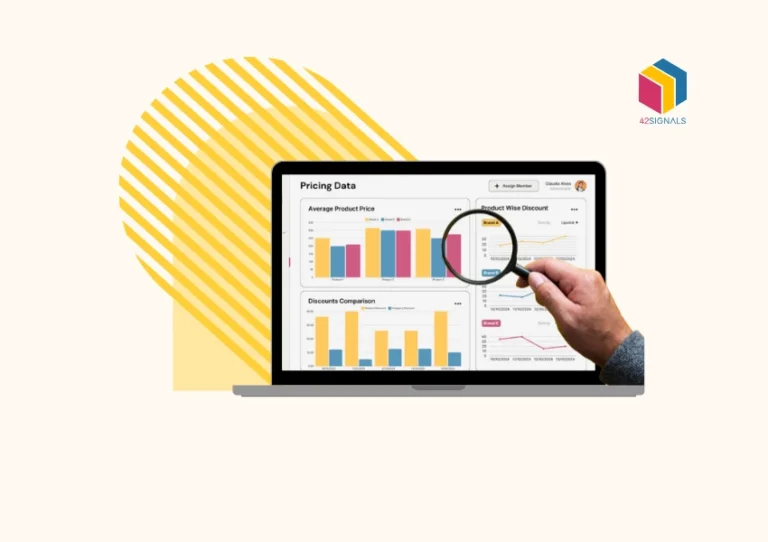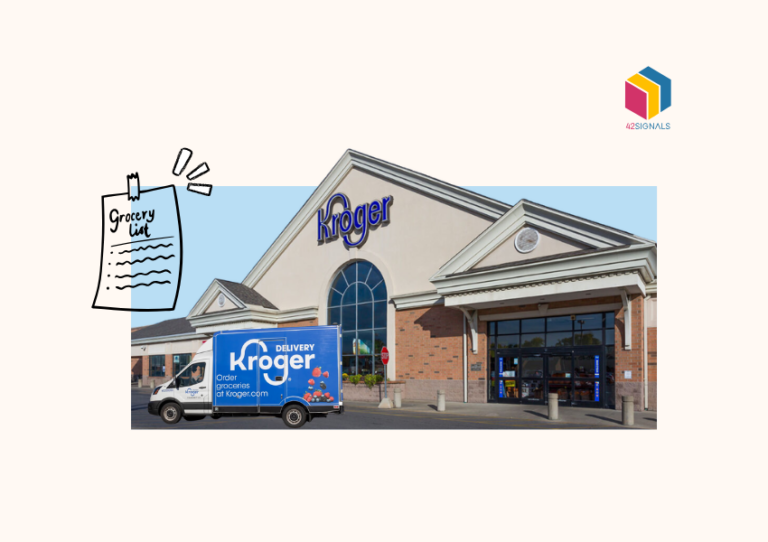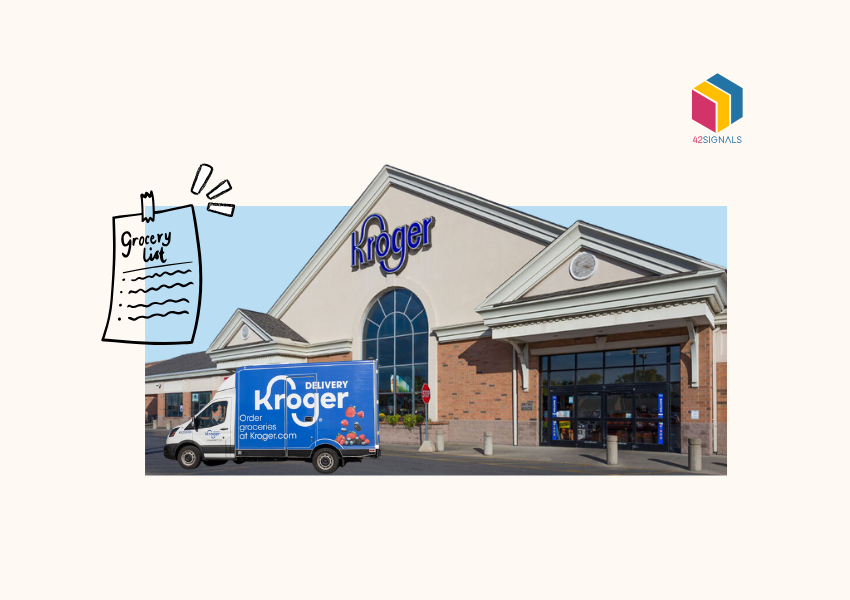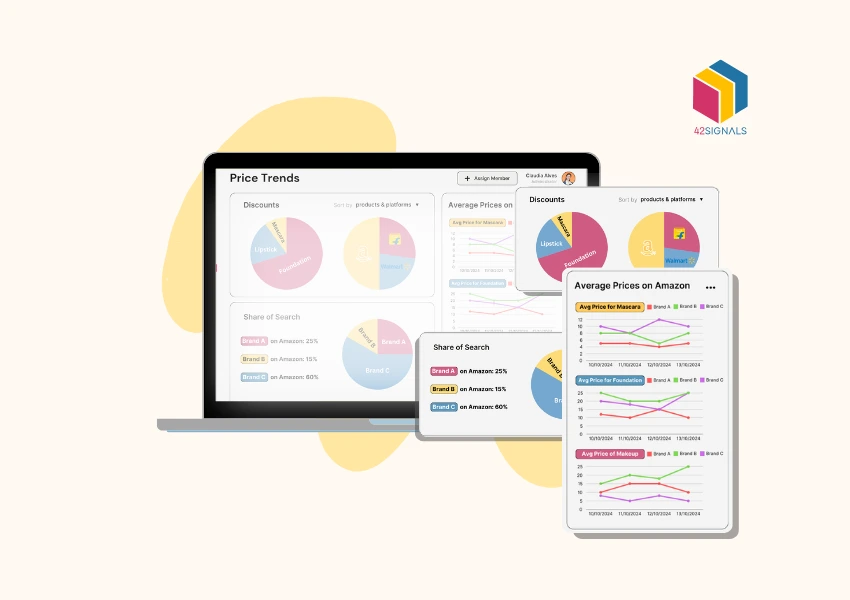In today’s highly competitive digital marketplace, having strong product visibility is crucial for businesses looking to succeed. With consumers increasingly turning to online shopping, optimizing the digital shelf presence of products is essential. One way to achieve this is by leveraging digital shelf data.
Understanding the Digital Shelf
Data from the digital shelf encompasses the data and intelligence gathered from diverse online marketplaces where products are sold. This encompasses details like product descriptions, images, pricing, stock availability, customer feedback, ratings, and other significant indicators.
By analyzing data from the digital shelf, enterprises can extract valuable insights into their product performance and discern the elements affecting their presence and prominence.
Importance of Digital Shelf Analysis
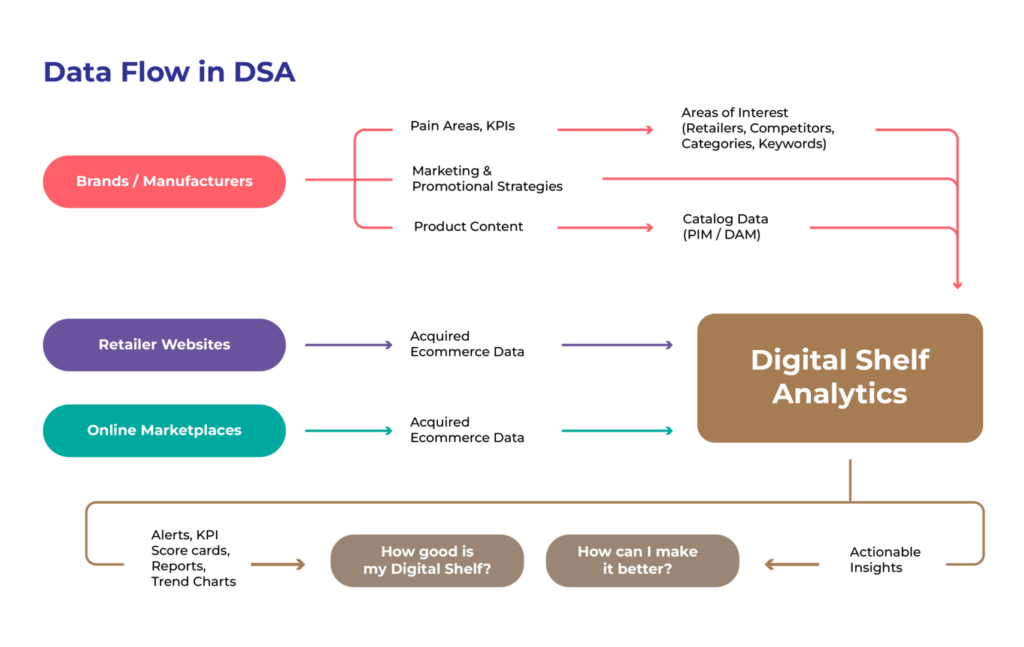
Image Source: Dataweave
Analyzing digital shelf data with digital shelf analytics is essential for businesses to improve their product visibility. It offers valuable insights into customer preferences, market trends, and competitor tactics. Armed with this information, businesses can make well-informed choices and deploy successful marketing strategies to boost product exposure and increase sales.
Identifying Key Metrics for Product Visibility
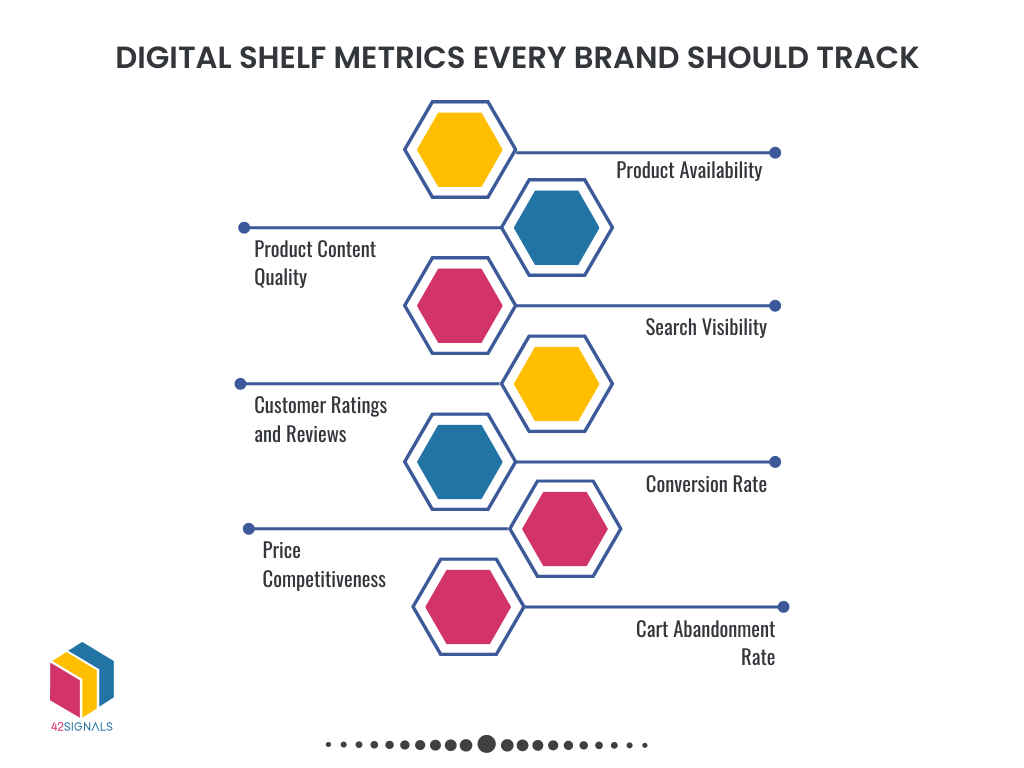
To leverage digital shelf data effectively, it is important to identify key metrics that impact product visibility. Some key metrics to consider include:
1. Positioning on Search Results:
It’s essential to understand the position of your product on search results pages. The greater your product’s ranking, the greater the visibility it garners.
2. Click-through Rate (CTR)
Monitoring the CTR helps determine how often users click on your product listing. A high CTR indicates strong visibility and customer interest.
3. Conversion Rate
Tracking the percentage of users who make a purchase after viewing your product provides insights into product appeal and effectiveness.
4. Competitor Analysis
Analyzing competitor data can help identify areas where your product may be lacking visibility compared to similar offerings.
Optimizing Product Descriptions and Images
Product descriptions and images play a vital role in attracting and engaging potential customers. Optimizing them based on digital shelf data analysis is crucial for improved visibility. Here are some tips for optimization:
• Keyword Research
Research and incorporate relevant keywords in your product descriptions to improve search engine visibility.
• Clear and Concise Descriptions
Ensure that your product descriptions are informative, easy to read, and highlight key features and benefits.
• High-Quality Images
Use high-resolution images that accurately represent your product and showcase its best attributes.
• A/B Testing
Experiment with different descriptions and images to identify the most effective ones for enhancing visibility and driving conversions.
Leveraging Customer Reviews and Ratings
Customer reviews and ratings an important digital shelf data component have a significant impact on product visibility and consumer trust. Incorporating them into your digital shelf strategy can be highly beneficial.

Image Source: Sendible
This is how you can make the most of customer reviews and ratings:
- Encourage Customer Reviews: Prompt satisfied customers to leave reviews by sending follow-up emails or offering incentives for feedback.
- Respond to Reviews: Address customer concerns and respond to reviews promptly to demonstrate your commitment to customer satisfaction.
- Highlight Positive Reviews: Showcase positive reviews and ratings on your product pages to build trust and enhance visibility.
- Use Ratings in Advertisements: Incorporate positive ratings and reviews in your advertising campaigns to attract potential customers.
All of this information complements digital shelf data to improve operations and customer experience.
Continuous Monitoring and Improvements
Digital shelf analysis is an ongoing process. Continuous monitoring and improvements are essential to adapt to changing market trends and consumer preferences. Some strategies for continuous improvement are:
- Regular Data Analysis: Analyze this data at regular intervals to identify trends, patterns, and areas for improvement.
- Competitor Monitoring: Keep track of competitor strategies and adjust your approach accordingly to stay ahead in the market.
- Content Optimization: Continuously optimize product descriptions, images, and other content based on insights from data analysis.
- Adapt to Customer Feedback: Listen to customer feedback and make necessary improvements to enhance product visibility and meet customer needs.
Leveraging digital shelf data provides businesses with essential insights into product performance and consumer behavior. By understanding and utilizing this data effectively, businesses can optimize product visibility, attract more customers, and drive sales in the dynamic digital landscape.
For more information on how to leverage digital shelf analytics effectively and enhance your product visibility, please reach out to us at sales@42signals.com.

